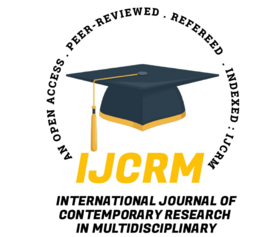International Journal of Contemporary Research In Multidisciplinary, 2025;4(3):176-183
Nutritional Management in Patients with Chronic Liver Disease: A Comprehensive Review
Author Name: Haniya Jabeen; Maliha Mirza; Dr. Ayesha Fatima;
Abstract
Chronic liver disease (CLD) is a progressive disorder marked by deteriorating liver function resulting from persistent inflammation, fibrosis, and eventually cirrhosis. It affects more than 844 million people worldwide and is responsible for approximately 2 million deaths each year. CLD arises from a variety of causes, including excessive alcohol consumption, non-alcoholic fatty liver disease (NAFLD), viral hepatitis, autoimmune disorders, and inherited conditions.
Malnutrition is a frequent complication in CLD, primarily due to disruptions in fat absorption, metabolic alterations, and overall nutritional deficiencies. Protein-calorie malnutrition (PCM) is particularly prevalent, occurring in up to 90% of individuals with advanced liver disease. This nutritional deficit contributes to worsening outcomes, increasing the risk of complications such as hepatic encephalopathy (HE), hepatorenal syndrome, and diminished liver regeneration.
Management of nutrition in CLD focuses on preserving energy and protein balance through appropriate feeding strategies. Current guidelines recommend an energy intake of 35–40 kcal/kg/day and a protein intake of 1.2–1.5 g/kg/day. Enteral nutrition, which includes both oral intake and feeding via tubes, is typically preferred due to its alignment with natural digestive processes and reduced complication rates. Oral feeding strategies emphasize small, frequent meals that are rich in complex carbohydrates, high-quality protein, and branched-chain amino acids (BCAAs). Tube feeding becomes necessary when oral intake fails to meet nutritional needs, with formulas customized to the patient's condition. In situations where enteral feeding is not possible, parenteral nutrition may be used to provide precise amounts of essential nutrients intravenously.
Although nutritional support has advanced significantly, both enteral and parenteral methods carry risks such as infection, refeeding syndrome, and gastrointestinal side effects. Therefore, successful nutritional management in CLD requires a multidisciplinary approach, tailored to the individual, to reduce complications, enhance nutritional status, and support liver function recovery.
Keywords
CLD Nutrition, Chronic Liver Disease, Enteral Nutrition, Parenteral Nutrition, Malnutrition, Tube Feeding





